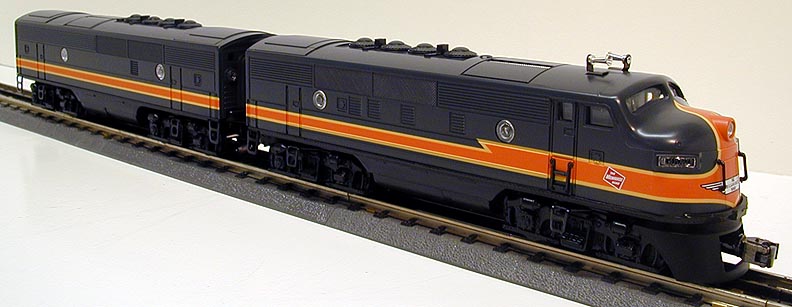Originally Posted by fisch330:
Just as an aside: The early Lionel F-3's, the Williams F-3's and MTH's Railkink F3's all were made without a lower headlight opening. On the Milwaukee, the upper light was the Mars light; the lower was the actual headlight. You might check photos or look at the model to see if it is correctly represented before purchasing any model.
Paul Fischer
All so-called "traditional" Lionel F-3s since Postwar days have only a single headlight opening. Lionel did their Postwar Scale engines to mimic Postwar style and colors, only with some added details, so those engines (including the Milwaukees, and the Postwar Scale Santa Fe Warbonnets are another example) only have a single headlight opening.
All of Lionel's scale F-3s and F-7s have Mars lights, if the prototypes had them. Not all railroads used them, of course, such as the Pennsy and Canadian Pacific.
All Lionel scale F units that I've seen have the Mars lights in the upper opening. So to, on all railroads I'm familiar with, the Mars light was the upper light, and the regular headlight was in the lower opening. There may have been some exceptions to this practice, but I don't know what they are. It's possible that Federal regulations dictated this practice, perhaps someone will know.








